Here are a few photos of a lightning struck tree I noticed while on a walk with my daughter. Now it has become a sight we light to visit often because my daughter is now fascinated with lightning.
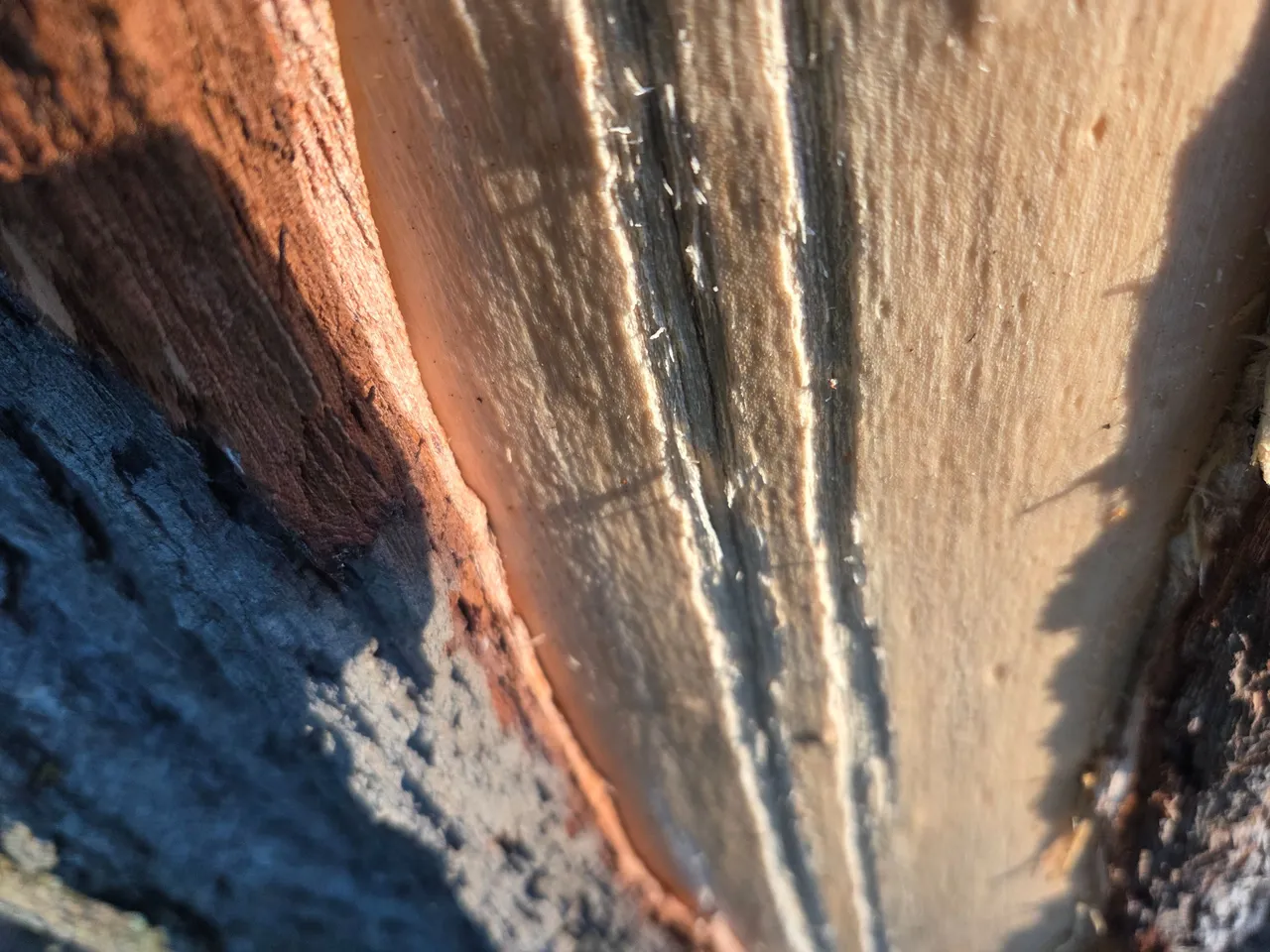
Earlier this week there had been a serious summer thunderstorm and this tree is on one of the few hills in Illinois. Things get struck by lightning the higher they are as the clouds roll over the flat landscape. Higher points are the path of least resistance for electrical discharges to happen over flat landscapes.

It looks like this bolt split into two as it traveled down the tree. The sheer power of the strike ripped off the bark but didn't get too deep into the maple's hardwood.
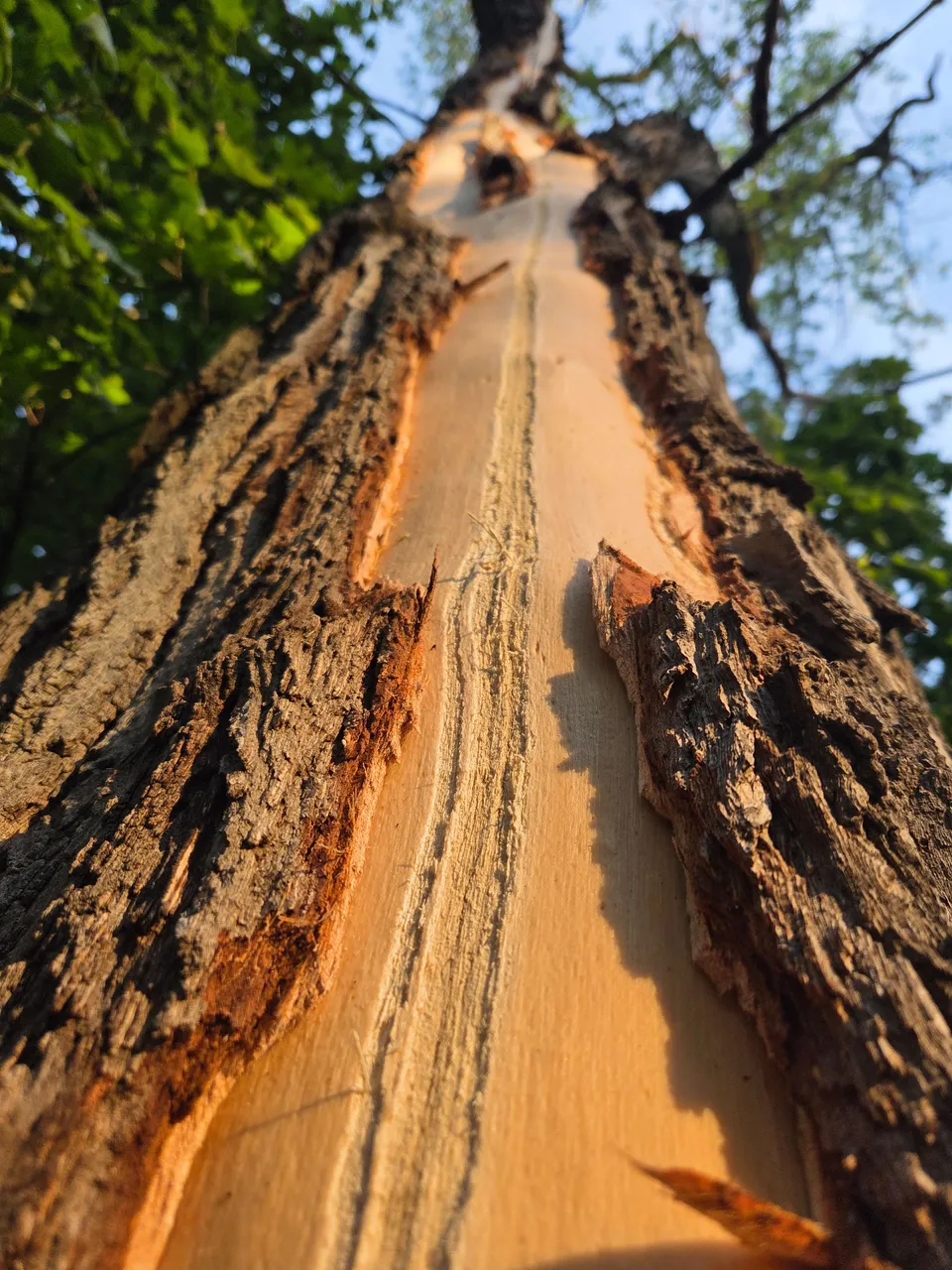
The bolt basically traveled all the way from the top down one side to the bottom. It also blasted off a few smaller branches on top and sent the bark flying far in the opposite direction.
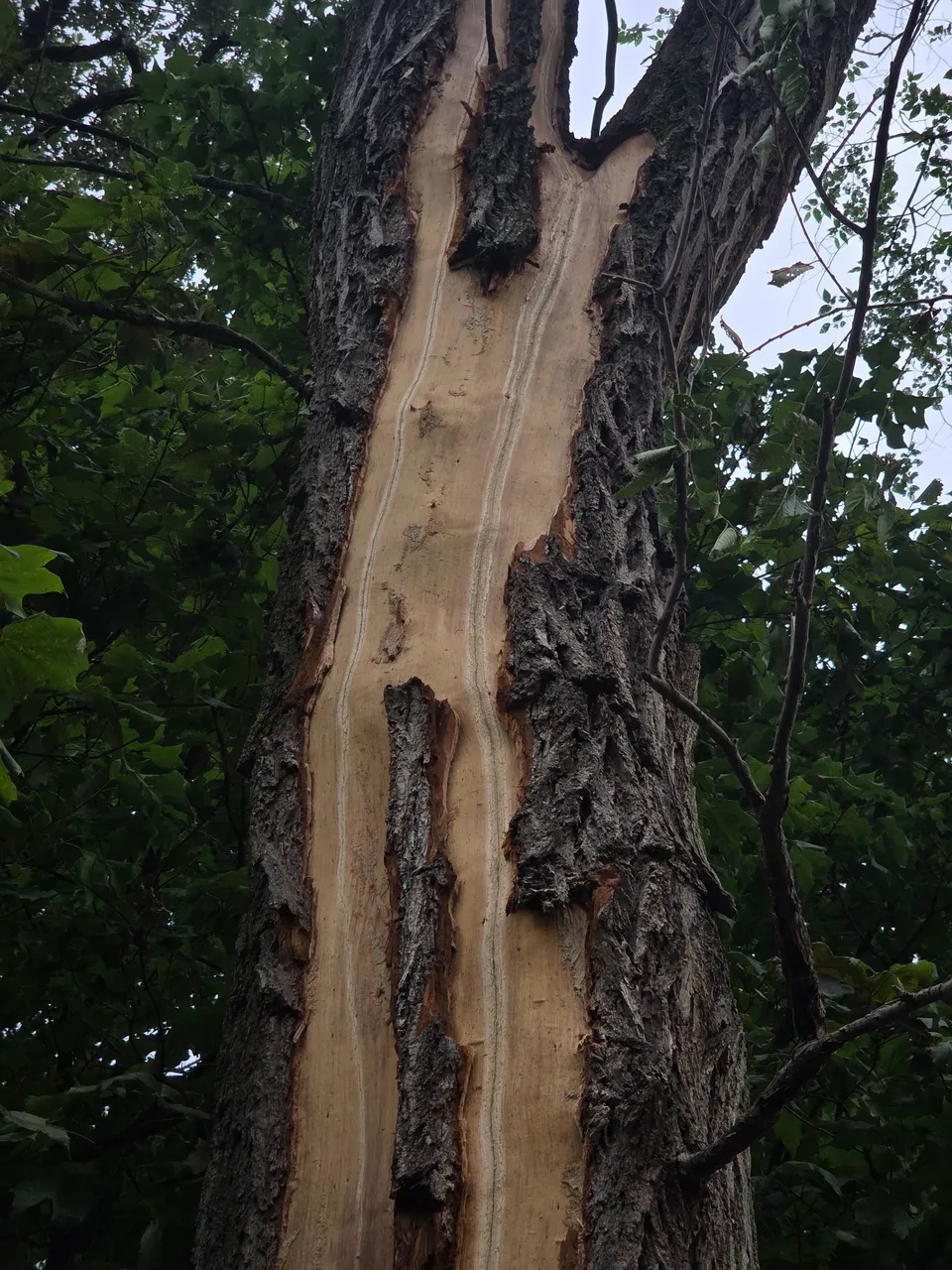
Higher up you can see where it was two strands of electricity, but it eventually combined into one bolt towards the ground. Many trees will catch fire as lightning can be 53,540 degrees Fahrenheit or 29,727 degrees Celsius (hotter than the surface of the sun at times). Some species of trees have lots of liquid in them and they kind of boil from the heat and then explode completely. This hardwood ended up just getting an interesting scratch on it. I suspect it will survive, I'm just hoping no wood boring beetles see this as an opportunity to scavenge an opening in the bark.

For scale here is my daughter inspecting it the day after. Ever since she has seen this tree and I told her it was hit by lightning she wants to go back and visit it. She also bugs me to watch lightning strike videos on youtube. Even when we put her to bed she kept saying "lightning struck the tree!!!" lol. Quite an impression this damage made on her.
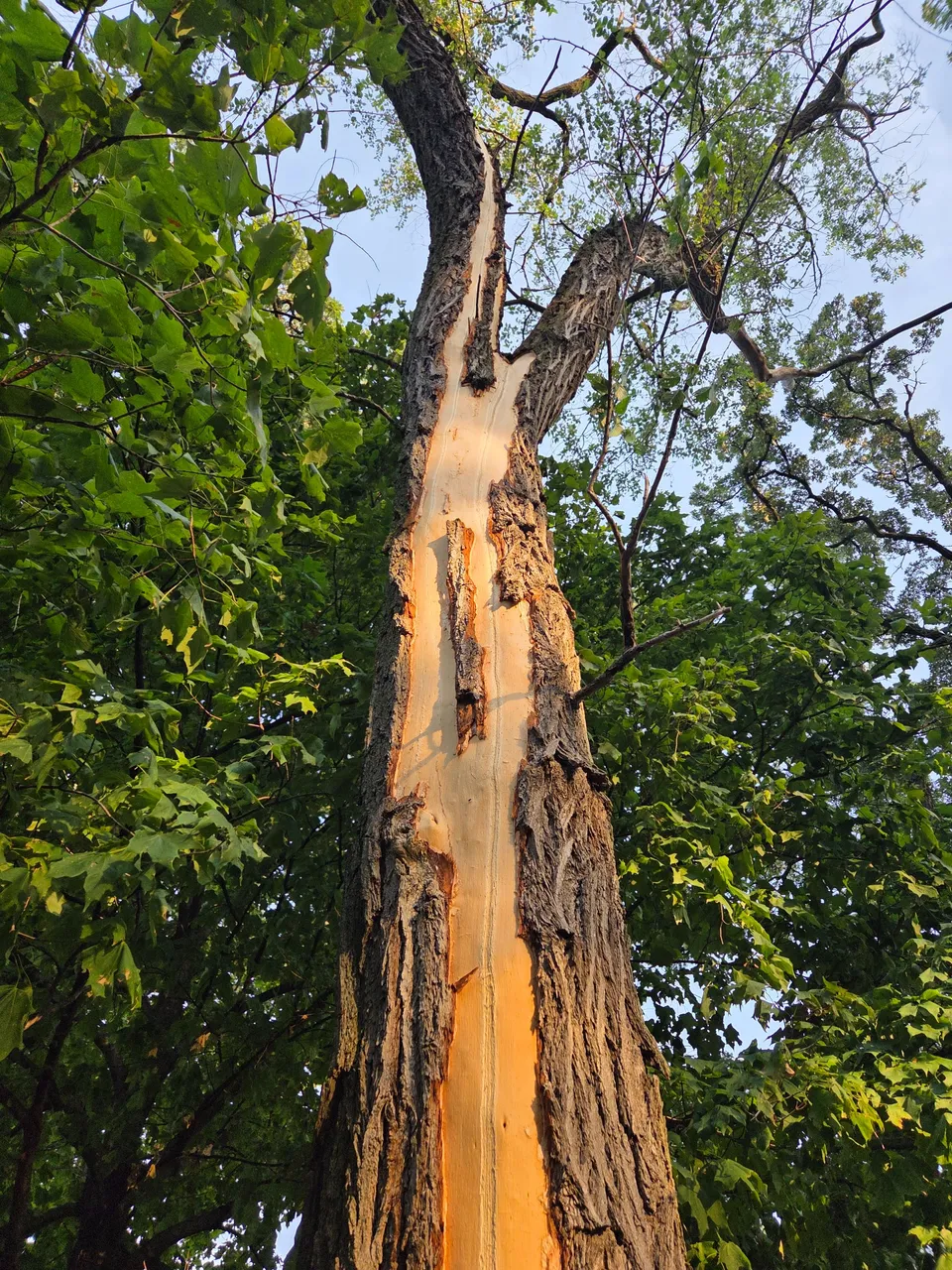
Another interesting tidbit about this tree is there used to be red-tailed hawks nesting here. I'm hoping they have left the nest long ago and avoided this catastrophe. Otherwise there might be some deep fried chicken wings up there. Probably a couple squirrels caught some splash damage as well, though fortunately I didn't notice any crispy critters laying around nearby.
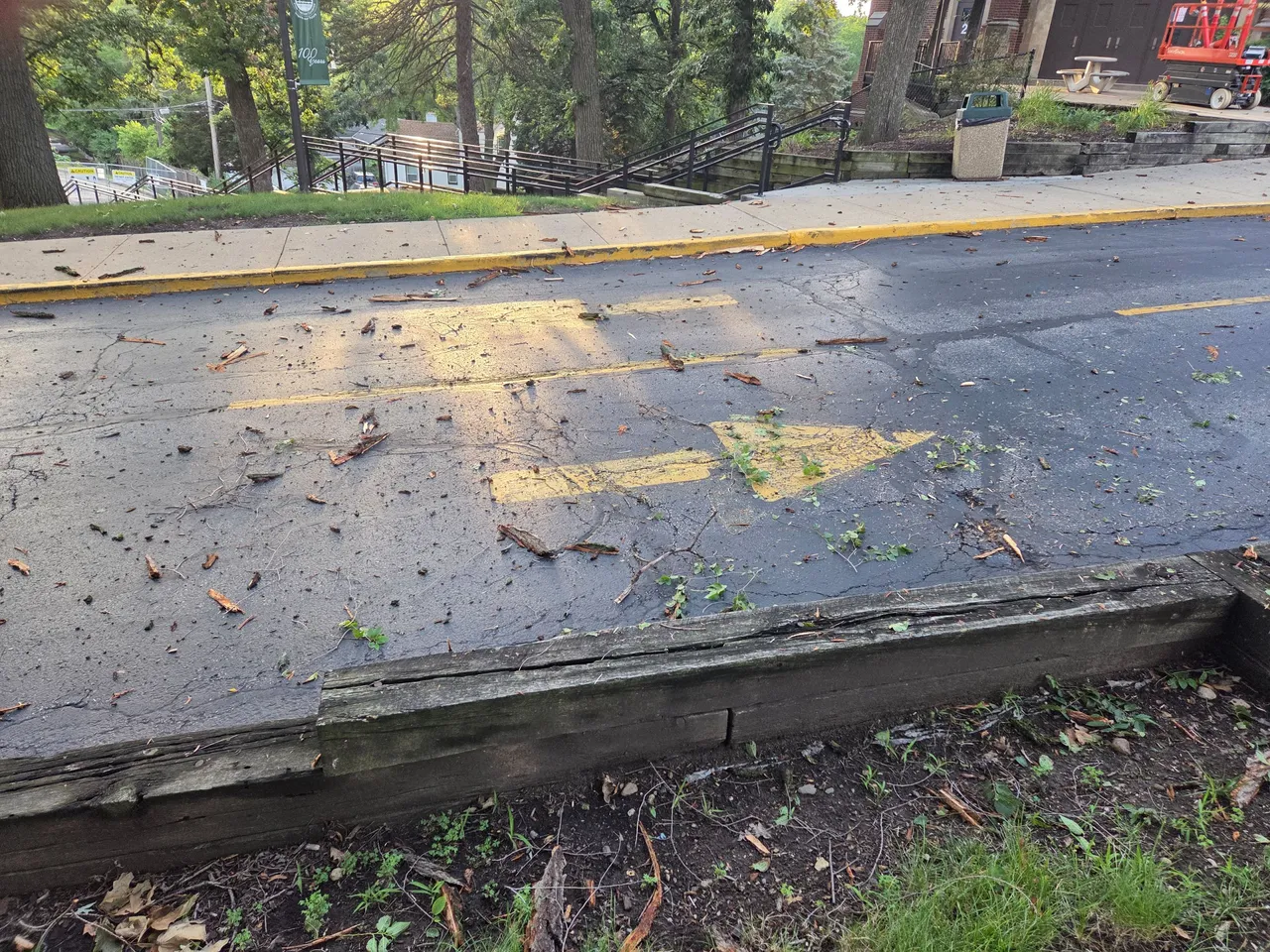
The bark and branches blasted off the side a good 30 feet away. This happened right next to a high school with lots of security cameras. I'm hoping to ask someone if they can look up the strike "for science". If anyone was nearby when this happened I'm sure they are deaf and blind and super shaken by the explosion. Many people survive lightning strikes and they end up with an interesting lightning scar on their skin that resembles a fractal pattern. It goes away after a while fortunately. Most lightning strikes on people are splash lightning where it travels down the tree into the ground then hits you on the ground with smaller charges of electricity. Campers often get hit if they setup their tent right next to a tall tree. The tree gets hit then the lightning crawls on the ground and hits everyone in the tent. Some tips to avoid getting hit by lightning while camping in a tent are
- Avoid setting up your tent near a tall tree.
- Get a tent with graphite tent poles (no metal).
- Setup a lightning rod nearby to draw the lightning away from the tent.
- Try not to setup your tent on a hill, rather put it lower than the tallest thing in the area.
- Bring no metal objects inside the tent with you.
This way if you find yourself caught camping in a thunderstorm you will probably not get fried, unless ball lightning decides to visit you inside the tent (vary rare).
For reference here is a lightning strike that happened at a school in the state next to mine. The poor tree was completely destroyed. It got cooked from the inside out, caught fire and fell down. Thanks fully no one got hit by splash lightning.That's all for now, thanks for looking :-)